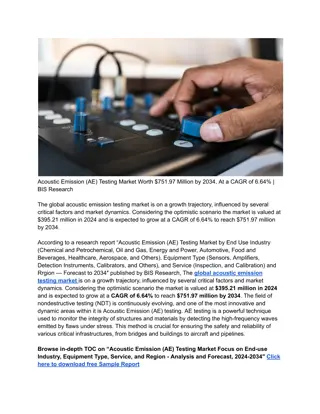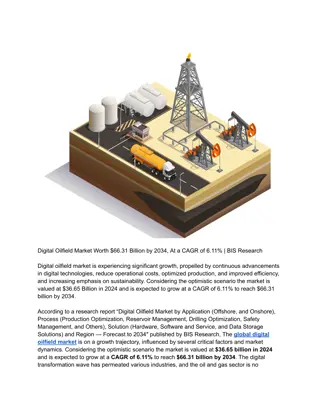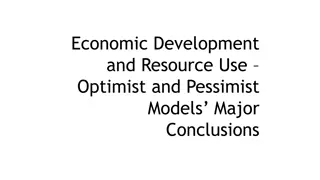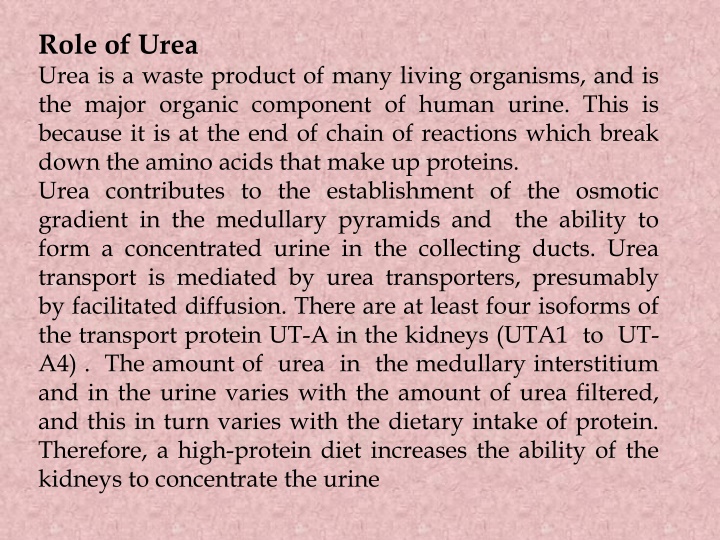
Skeptically Optimistic in Online Education
In an open online course, instructors share their journey from skepticism to optimism in teaching online. The Boot Camp for Beginning Online Instructors offers a self-paced, asynchronous program with videos, challenges, and guidance. Participants learn to transition to online teaching, manage virtual classrooms, and assess outcomes. Portable pedagogy using everyday technology encourages engagement and collaboration. The course emphasizes activity system elements and tools for effective online teaching. Designed around five challenges, the course helps GTAs develop the skills needed for successful online instruction.
Download Presentation

Please find below an Image/Link to download the presentation.
The content on the website is provided AS IS for your information and personal use only. It may not be sold, licensed, or shared on other websites without obtaining consent from the author. If you encounter any issues during the download, it is possible that the publisher has removed the file from their server.
You are allowed to download the files provided on this website for personal or commercial use, subject to the condition that they are used lawfully. All files are the property of their respective owners.
The content on the website is provided AS IS for your information and personal use only. It may not be sold, licensed, or shared on other websites without obtaining consent from the author.
E N D
Presentation Transcript
Role of Urea Urea is a waste product of many living organisms, and is the major organic component of human urine. This is because it is at the end of chain of reactions which break down the amino acids that make up proteins. Urea contributes to the establishment of the osmotic gradient in the medullary pyramids and form a concentrated urine in the collecting ducts. Urea transport is mediated by urea transporters, presumably by facilitated diffusion. There are at least four isoforms of the transport protein UT-A in the kidneys (UTA1 to UT- A4) . The amount of urea in the medullary interstitium and in the urine varies with the amount of urea filtered, and this in turn varies with the dietary intake of protein. Therefore, a high-protein diet increases the ability of the kidneys to concentrate the urine the ability to
Water Diuresis The feedback mechanism controlling vasopressin secretion and the way vasopressin secretion is stimulated by a rise and inhibited by a drop in the effective osmotic pressure of the plasma . The water diuresis produced by drinking large amounts of hypotonic fluid begins about 15 minutes after ingestion of a water load and reaches its maximum in about 40 minutes. The act of drinking produces a small decrease in vasopressin secretion absorbed, but most of the inhibition is produced by the decrease in plasma osmolality after the water is absorbed. before the water is
Osmotic diuresis : is increased urination caused by the presence of certain substances in the small tubes of the kidneys. The excretion occurs when substances such as glucose enter the kidney tubules and cannot be reabsorbed (due to a pathological state or the normal nature of the substance). The substances cause an increase in the osmotic pressure within the tubule, causing retention of water within the lumen, and thus reduces the reabsorption of water, increasing urine output (i.e. diuresis). The same effect can be seen in therapeutics such as mannitol, which is used to increase urine output and decrease extracellular fluid volume.
Substances in the circulation can also increase the amount of circulating fluid by increasing the osmolarity of the blood. This has the effect of pulling water from the interstitial space, making more water available in the blood and causing the kidney to compensate by removing it as urine. In hypotension, often colloids are used intravenously to increase circulating volume in themselves, but as they exert a certain amount of osmotic pressure, water is therefore also moved, further volume. As blood pressure increases, the kidney removes the excess fluid as urine. Osmotic diuresis results in dehydration from polyuria and the classic polydipsia (excessive thirst) associated with DM. increasing circulating
What are the symptoms of an osmotic diuresis? Osmotic dehydration occurs. Symptoms of dehydration include faintness, dizziness, rapid pulse, and dry mouth. diuresis does not cause symptoms unless URINE ACIDIFICATION Source of acids Carbonic acids and Non carbonic acids Source of H+ : Diet CO2 produced as end of metabolism Secretion of H by renal tubules
Majority of urine acidification occurs in DCT & PCT .Three main buffers remove free H 1. Bicarbonate system. 2.Phosphate system. 3. Ammonia system Buffer systems in kidney bicarbonate system secreted H in PCT reacts with HCO3 to form H2CO3 and help in HCO3 reabsorption 1.No net H secretion occurs. 2. therefore pH remains unchanged 3. H secreted in excess is buffered by two other systems
phosphate systems H secreted is buffered with HPO4 H is secreted in exchange for Na and N 1. 70%-75% of filtered HPO4 is reabsorbed 2. 25% available for buffering a 2 HPO4 in to Na H2PO4 3. Na H2PO4 excreted in urine Ammonia system SITE ( DCT and PCT) Secreted and synthesized not by filtrate, Formation of ammonia Mainly form glutamine NH3 diffuses form tubular cells into lumen where it combines with H to form NH4 is lipid insoluble, therefore remains in lumen
Uremia or uraemia : is a term used to loosely describe the illness accompanying kidney failure (also called renal failure), in particular the nitrogenous waste products associated with the failure of this organ. This is not to be confused with uricemia, or hyperuricemia, a build up of uric acid in the blood. In kidney failure, urea and other waste products, which are normally excreted into the urine, are retained in the blood. Early symptoms include anorexia and lethargy, and late symptoms can include decreased mental acuity and coma. Other symptoms include fatigue, nausea, vomiting, cold, bone pain, itch, shortness of breath.
Because uremia mostly is a consequence of kidney failure, its signs and concomitantly with other signs and symptoms of kidney failure, such as hypertension due to volume overload, hypocalcemic tetany, and anemia due to erythropoietin deficiency. Many individuals who have uremia need to be hospitalized. Doctors treat the condition with dialysis, a medical procedure in which a machine filters and purifies the blood. Medical practitioners might also make recommendations regarding dietary changes or prescribe medication to control the symptoms. symptoms often occur
Patients who have uremia occasionally develop acute tubular necrosis, a condition in which the tissues in the kidneys become severely damaged. These patients might eventually develop acute kidney failure, a condition where the kidneys suddenly stop working. Other patients with uremia might have convulsions, heart failure or coma. Untreated uremia can be fatal.
Acidosis is a condition in which there is too much acid in the body fluids. It is the opposite of alkalosis (a condition in which there is too much base in the body fluids). Causes The kidneys and lungs maintain the balance (proper pH level) . Acidosis occurs when acid builds up or when bicarbonate (a base) is lost. Acidosis is classified as either respiratory acidosis or metabolic acidosis. Respiratory acidosis: is a condition that occurs when the lungs cannot remove all of the carbon dioxide the body produces. This causes body fluids, especially the blood, to become too acidic. Metabolic acidosis : develops when too much acid is produced or the kidneys cannot remove enough acid from the body. There are several types of metabolic acidosis:
Diabetic acidosis (also called diabetic ketoacidosis and DKA) develops when substances called ketone bodies (which are acidic) build up during uncontrolled diabetes. Lactic acidosis is a buildup of lactic acid. This can be caused by: Alcohol ,Cancer, Liver failure, (hypoglycemia) ,Medications , Prolonged lack of oxygen from shock, heart failure, or severe anemia. Low blood sugar Other causes of metabolic acidosis include: Kidney disease (distal renal tubular acidosis and proximal renal tubular acidosis) and Severe dehydration.
What is Counter current mechanism? Counter current mechanism is the process by which renal medullary interstitial fluid becomes hyper-osmotic. Components of Counter Current Mechanism: Counter current multiplier (Loop of Henle acts here) Counter current exchanger (vasa recta acts here)
Descending limb is not permeable to electrolytes. So it is of no importance in establishing hyper osmolarity in medullary interstitium. Thin and thick segments of ascending limb transports electrolytes (mainly Na+ and Cl-) to the medullary interstitium by the process of simple diffusion and 1 Na+1K+-2Cl- co transporter system respectively. This process occurs repeatedly and more and more solutes (not water) are trapped in medullary interstitium hyperosmotic renal medullary interstitium (1200- 1400 mosm/L) which results in
Counter current exchanger: Vasa recta maintain hyperosmolarity of medullary interstitium as counter current exchanger. Vasa recta forms a U shaped bend parallel to loop of Henle. Osmolarity in renal medulla is graded (Osmolarity increases in downward direction as descending limb of U gradually passes through hyperosmotic medulla, solute enter into it from medulla. But ascending limb passes progressively through decreased osmolarity of medulla (as osmolarity lowers in upward direction). Hence solutes return back to renal medulla (which entered in descending limb of earlier) So counter current exchanger functions by- Tendency of electrolytes to be recirculated Tendency of water to be removed by vasa recta
Micturition: is the process where the urinary bladder empties after being filled. -Micturition reflex: mediated through the pelvic nerves (S2-S3) which contain sensory fibers for the detection of bladder wall stretching and the motor fibers (parasympathetic) ending on bladder wall ganglion cells that send post ganglionic fibers to the detrusor muscles of the bladder. The urinary bladder begins to fill up to 100-150 ml and issuing a first desire to urinate due to stretch receptors in the wall of the urinary bladder causing a reflex contraction. After some time, the contraction disappears.
When the volume reaches 400-500 ml, the reflex contraction increases & if the pressure builds more than the external sphincter (voluntary control), opening of the bladder neck occurs and leads to another reflex through the pudendal nerve (S1-S2) to inhibit the external sphincter. If this inhibition overcomes the voluntary control, urination occurs


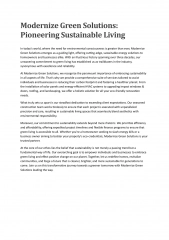
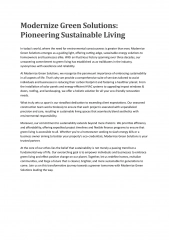






![Mass Notification System Market Size, Report & Forecast _ BIS Research [2024-2034]](/thumb/86971/mass-notification-system-market-size-report-forecast-bis-research-2024-2034.jpg)


